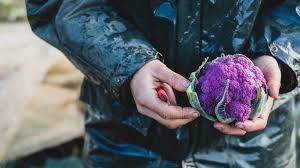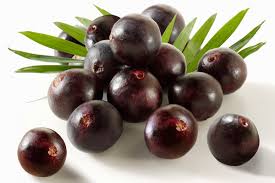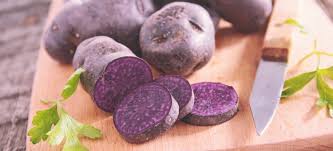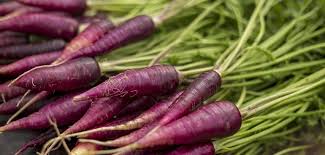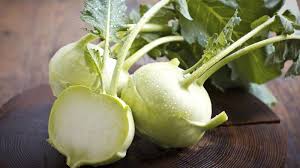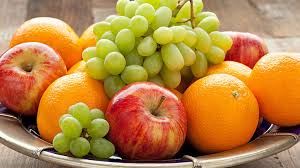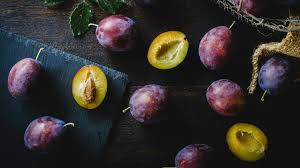Content of the Article
Thanks to its high concentration of powerful plant compounds, natural purple foods It offers a wide variety of health benefits.
Although the color purple is most commonly associated with fruits, many purple food There are types.
Here benefits of purple fruit and purple vegetables…
What Are Purple Fruits and Vegetables?
Blackberry
Blackberry is the most known purple fruitsis den. This juicy fruit is full of powerful anthocyanin pigments.
Anthocyanins, a type that gives food their purple, blue, or red color polyphenol compound. They are found in high concentrations in other fruits, vegetables, and grains on this list.
It acts as powerful antioxidants in the body, protecting cells from damage and reducing inflammation, which could otherwise cause adverse health consequences.
Blackberries also contain other powerful polyphenol antioxidants, C vitaminIt contains fiber and micronutrients such as folate, magnesium, potassium, and manganese.
Purple cauliflower
Purple cauliflower is a visually delightful vegetable. Unlike the white colored varieties, purple cauliflower contains anthocyanins thanks to a genetic mutation that gives them an intense purple hue.
Purple cauliflower not only adds color to any dish, but also provides anti-inflammatory benefits and protects against certain cancers, including colorectal cancer.
Black rice
Black rice ( Oryza sativa L. indica ) is a unique rice variety that turns dark purple when cooked. Unlike other rice varieties, it is an excellent source of anthocyanins that fight cancer.
Black rice anthocyanins have been shown to inhibit cancer cell growth and induce cancer cell death in test-tube and animal studies.
Purple sweet potato
Sweet potatoIt is an extremely nutritious food that provides many vitamins and minerals, including vitamin C, provitamin A, potassium, and B vitamins.
Purple sweet potato provides anthocyanin antioxidants in addition to these nutrients. Test-tube and animal studies show that purple sweet potato may have anti-inflammatory properties and protect against certain types of cancer, including colon cancer.
Eggplant
Eggplant It comes in a variety of colors, but purple colored ones are the most known. Although not as nutrient-dense as other foods on this list, eggplant is high in antioxidants and manganese, a mineral essential for bone health and metabolism.
The skin of purple eggplant is particularly concentrated in anthocyanin nasunin, which has been found to have anti-inflammatory and cardioprotective properties in animal and test-tube studies.
Purple carrot
Purple carrotis a sweet vegetable that contains a wide variety of polyphenol antioxidants, including anthocyanins, cinnamic acid, and chlorogenic acid. Purple carrots contain more polyphenol antioxidants than other carrot varieties.
Passion fruit
Passiflora, passion fruit grows on a tropical vine. The ripe passion fruit has a yellow or purple peel that covers its soft flesh.
Passion fruit contains a special polyphenol antioxidant called piceatannol, which has been shown to be exceptionally beneficial and can be particularly beneficial for skin health.
Purple mangosteen
Mangosteen fruithas a hard, dark purple outer shell. This fruit contains a B vitamin folate and fiber that are essential for many important processes in our body, including the production of DNA and red blood cells.
This unique fruit contains an antioxidant called xanthone, which has been shown in some studies to provide anti-inflammatory, neuroprotective and anticancer properties.
Purple asparagus
Although asparagusAlthough the green color of this vegetable is mostly known, there are also white and purple colored ones of this vegetable.
Purple asparagus offers rich vitamins, minerals and potent plant compounds, adding visual appeal and nutritional benefits to recipes. It is an excellent anthocyanin source.
Purple asparagus is a variety of asparagus with the highest routine concentration, a polyphenol plant pigment with potent cardioprotective and anticancer properties.
purple cabbage
All cabbage varieties are exceptionally nutritious. However, purple cabbage It contains anthocyanins, which further enhance the benefits of this vegetable.
Purple cabbage contains fiber, provitamin A and vitamin C. It provides a powerful anti-inflammatory effect thanks to the high levels of potent plant compounds found in its leaves.
Acai berry
Acai berryis a dark purple fruit that contains anthocyanins. This delicious purple fruit benefits health in many ways. It can increase blood antioxidant content and help reduce high cholesterol, blood sugar levels, and inflammation.
Dragon fruit
Red dragon fruitIt has a shiny reddish-purple flesh with tiny, black, edible seeds. This tropical fruit has the texture of a kiwi and is generally mild in taste.
Dragon fruit is low in calories and packed with fiber, vitamin C, and magnesium. Red dragon fruit also contains high concentrations of protective antioxidants.
Test-tube research shows that extract from red dragon fruit can stop the growth of some human cancer cells, including breast cancer, and cause cancer cell death.
Purple Barley
Harpis a cereal that comes in a variety of colors, including black, blue, yellow, and purple.
All types of barley are high in fiber and minerals such as manganese, iron, magnesium and selenium. Along with these nutrients, purple barley is loaded with anthocyanins, making it a great choice for a nutrient-rich ingredient.
Barley is also high in beta-glucan, a type of fiber linked to a number of health benefits. Studies show that beta-glucan can improve digestive health, reduce heart disease risk factors, and improve immune response.
Additionally, those who diets rich in whole grains such as purple barley have lower rates of disease, such as type 2 diabetes, heart disease, and certain cancers.
What Are the Benefits of Purple Food?
A scientifically proven fact is that the darker the food, the higher the antioxidant level. Antioxidants have the ability to scavenge free radicals and provide younger looking.
Therefore, dark foods with purple pigment, such as purple onions, purple cabbage, black figs, prunes, and blackberries, have incredible healing powers.
The purple pigment in all these fruits and vegetables contains flavonoids, including resveratrol, that can help lower blood pressure. Resveratrolhelps relax artery walls, relieves pressure in the arteries, and promotes better circulation. Purple foodcontains a variety of polyphenols that can reduce the inflammatory response in the body.
Purple foods prevent cancer
Resveratrol, found in purple grapes, blueberries, blueberries, and grape juice, was able to prevent the spread of colorectal cancer in animal studies.
Other promising studies also show that resveratrol can cause cancer cell death in cases of prostate, breast, skin, liver, lung, and blood cancers.
Purple foods fight ulcers
In a 2011 study, the anthocyanins found in blackberries reduced stomach ulcer formation in rats.
Researchers have noted that this is because the antioxidants in blackberries prevent oxidation and are found naturally in the body. glutathione other important antioxidants like it increases its activity.
Purple foods are beneficial for the liver
Containing anthocyanins such as blueberries purple foodsreduces the damage of excessive alcohol intake to the liver.
Purple foods are good for the heart
Black currants can lower "bad" LDL cholesterol by up to 13 percent while raising "good" HDL cholesterol. Low cholesterol lowers the risk of heart disease. Black currants and blueberries contain high amounts of anthocyanins.
Purple foods prevent urinary tract infections
Vegetables like purple cauliflower, purple carrots, and purple cabbage contain anthocyanin, the same plant pigment responsible for cranberry's power to fight urinary tract infection.
Laboratory studies show that anthocyanin compounds fight H. pylori, the bacteria that promotes stomach ulcers and urinary tract infections.
As a result;
Purple fruits and purple vegetables It provides many health benefits and also adds color to meals. These provide the anthocyanin antioxidant. This antioxidant has many benefits.

